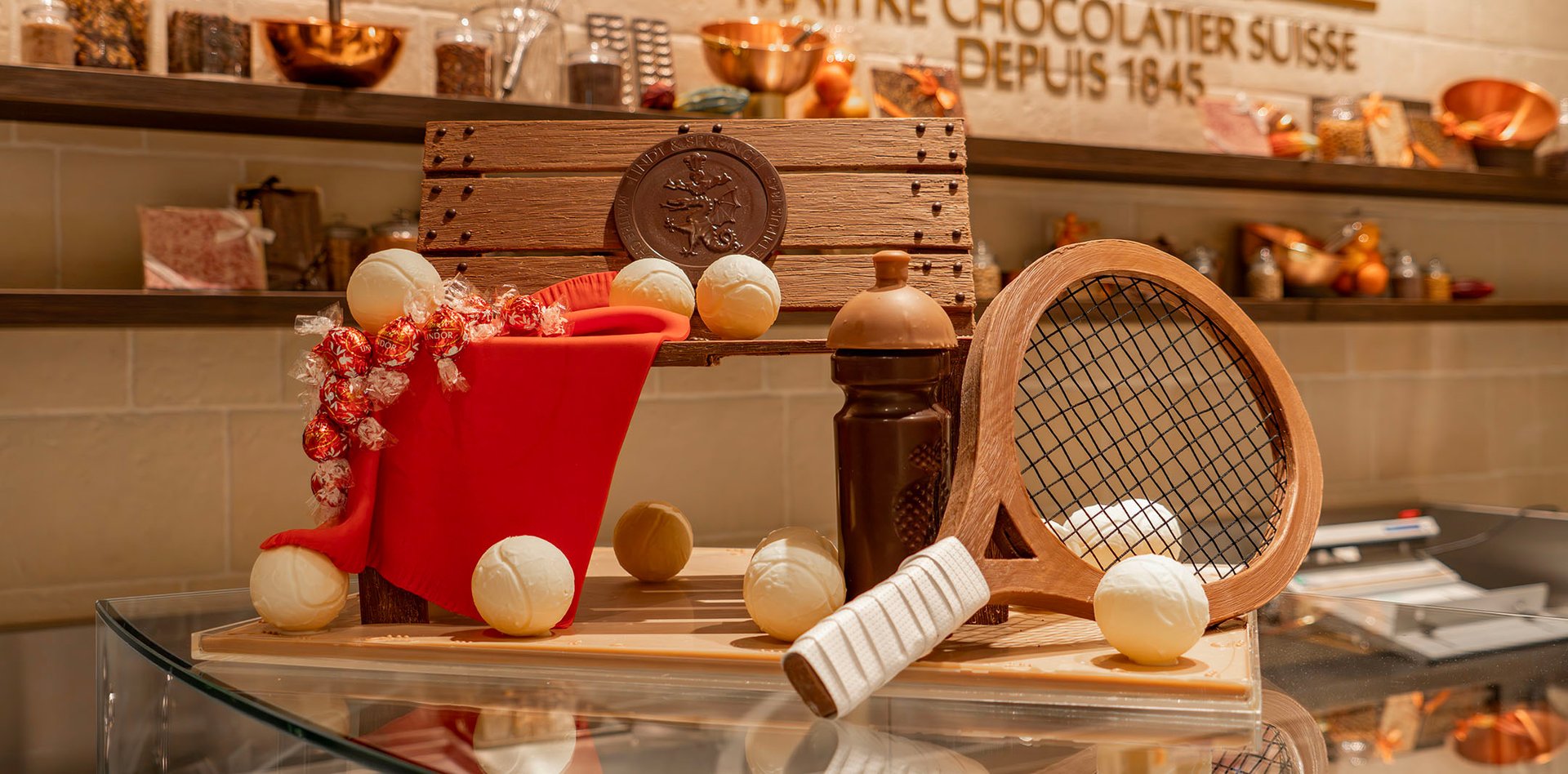
Chocolate in Europe
Explore the rich history, varieties, and cultural significance of chocolate across European nations.
Believe or not - from the tennis racket & balls to the board, seal, bottles - everything in the cover photo is made from chocolate!
History of Chocolate in Europe
Chocolate’s journey to Europe began in the 16th century when Spanish explorers brought cocoa beans from Central America. At first, chocolate was enjoyed as a bitter drink among European aristocrats, flavored with spices like cinnamon and vanilla. Over time, sugar was added, transforming it into the sweet treat we know today.
The Industrial Revolution in the 19th century revolutionized chocolate-making. Swiss chocolatiers like Daniel Peter and Henri Nestlé invented milk chocolate, while Belgian chocolatiers like Jean Neuhaus created pralines. These innovations made chocolate accessible beyond the elite and cemented its place as a European culinary treasure.

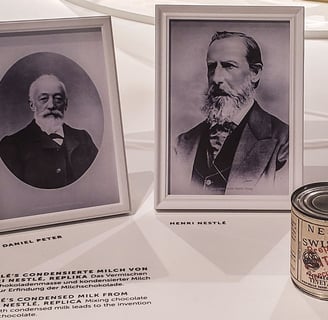

Europe is a dream destination for chocolate lovers. From the luxurious pralines of Belgium to the creamy milk chocolate of Switzerland, every country offers a unique take on this beloved treat. Whether you're planning your next European adventure or savoring it from afar, here's everything you need to know about chocolate in Europe—its history, types, forms, and the best places to experience it.
Dark Chocolate
Dark chocolate is bold and rich, with a high cocoa percentage (usually 70% or more). Its pronounced bitterness is balanced by earthy or fruity notes, depending on the cocoa origin. Dark chocolate pairs beautifully with red wine or coffee for a sophisticated tasting experience.
Milk Chocolate
Smooth, creamy, and sweet, milk chocolate combines cocoa solids with milk powder or condensed milk. It’s a universal favorite and often has a velvety texture that melts easily on the tongue.
Types of Chocolate
Other Variants
Ruby Chocolate: A new innovation made from ruby cocoa beans, offering a naturally pink color and fruity flavor.
Vegan Chocolate: Dairy-free options made with plant-based ingredients like almond or oat milk for those with dietary restrictions.

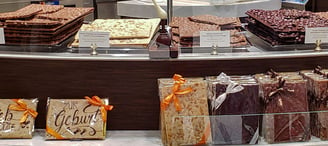
Chocolate Flavoring

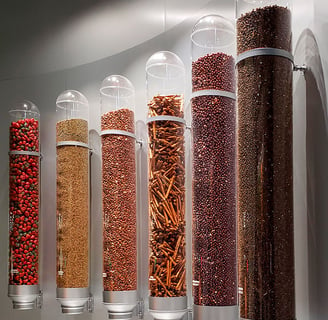
White Chocolate
Technically not "chocolate" because it contains no cocoa solids, white chocolate is crafted from cocoa butter, sugar, and milk. Its buttery sweetness makes it a perfect pairing for fruits like raspberries or citrus zest.
The Forms of Chocolate
Single-Origin Bars
These bars highlight cocoa beans from specific regions like Madagascar or Ecuador. They're ideal for gifting or sampling unique flavor profiles influenced by terroir.
Truffles
Luxurious bite-sized treats filled with ganache or flavored creams, often dusted with cocoa powder or coated in chocolate shells.
Tablets
Classic rectangular bars in various sizes, perfect for everyday indulgence.
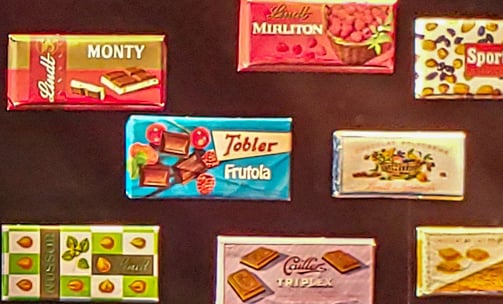


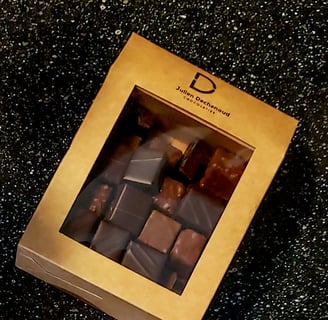
Pralines
A Belgian specialty, pralines are filled chocolates with nuts, caramel, fruit creams, or liqueurs.
Hot Chocolate
Europeans take hot chocolate seriously! In Spain, it's thick and rich—perfect for dipping churros—while French "chocolat chaud" is creamy and decadent.
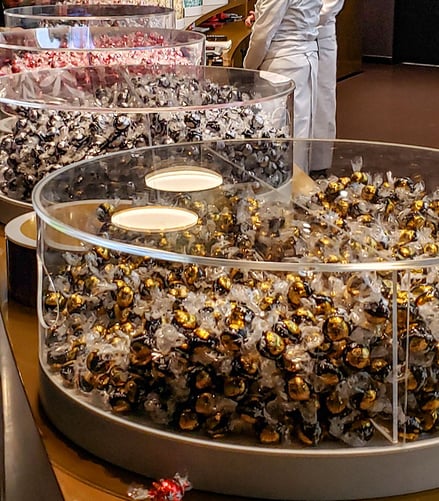

Belgium
Belgium is synonymous with chocolate. Known for its pralines, the country is home to iconic brands like Neuhaus, Godiva, and Leonidas, as well as artisanal chocolatiers in cities like Bruges and Brussels.
Countries Know For Their Chocolate


Chocolate Flavoring
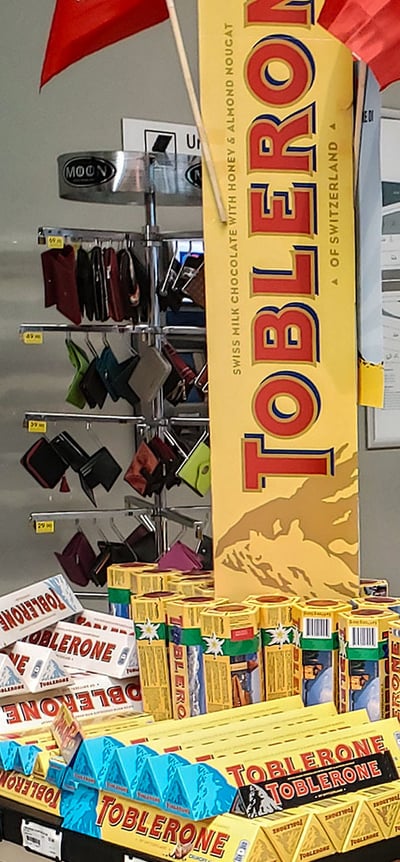

Switzerland
The birthplace of milk chocolate, Switzerland is known for its high-quality creations from brands like Lindt, Toblerone, and Sprüngli. Swiss chocolate is celebrated for its creamy texture and delicate balance of flavors.
France
French chocolate is all about refinement. Artisanal brands like Alain Ducasse Chocolatier and La Maison du Chocolat offer luxurious hand-crafted confections that are as beautiful as they are delicious.
Italy
Italy’s specialty is Gianduja, a smooth blend of chocolate and hazelnuts. Brands like Venchi and smaller producers in Turin are must-tries for their inventive flavor combinations.
Germany
Germany’s well-known brands include Ritter Sport, beloved for its square-shaped bars in diverse flavors. For artisanal options, seek out local chocolatiers in cities like Cologne or Hamburg.
Austria
Austria is known for its Mozartkugeln—chocolates filled with marzipan and nougat—named after composer Wolfgang Amadeus Mozart.

Fun Facts About Chocolate in Europe
European Chocolate Consumption: Europeans are among the highest consumers of chocolate in the world, with countries like Switzerland and Belgium leading the way. The average Swiss person consumes around 25½ lbs of chocolate each year!
Chocolate Festivals: Europe hosts numerous chocolate festivals throughout the year, including the Salon du Chocolat in Paris and the Brussels Chocolate Festival, where chocolatiers showcase their finest creations and visitors get to sample delicious treats.
Cocoa Origins: The word "chocolate" comes from the Aztec word "xocoatl," which referred to a bitter drink made from cacao beans. When chocolate made its way to Europe, it evolved into the sweeter versions we know today.
Chocolate in Cooking: In many European countries, chocolate isn’t just for sweets; it’s also used in savory dishes! In Spain, for example, chocolate is often used to enhance sauces for meats.
Chocolate and Valentine’s Day: Giving chocolate as a romantic gift on Valentine’s Day has its roots in France and Italy, where chocolates were once considered aphrodisiacs.
World Chocolate Capital: Brussels is often referred to as the "Chocolate Capital of the World," with numerous renowned chocolatiers and shops lining its streets.
Chocolate's Royal Roots: Chocolate was once reserved for royalty; it gained popularity in European courts during the 18th century when it was served as a luxurious beverage at royal gatherings.
Chocolate and Art: The famous Belgian chocolatier Pierre Marcolini is known for creating stunning chocolate sculptures that resemble fine art, showcasing the intersection of culinary skill and artistry.
The Chocolate River: In the 2000s, a rare phenomenon occurred in Italy when a river in southern Italy turned brown due to a cocoa spill from a nearby chocolate factory, creating a "chocolate river" that delighted locals.
The Great Chocolate Heist: In 2017, a group of thieves stole 20 tons of chocolate worth around €70,000 (approximately $75,000) from a truck in Germany, making headlines for one of the largest chocolate heists in history.
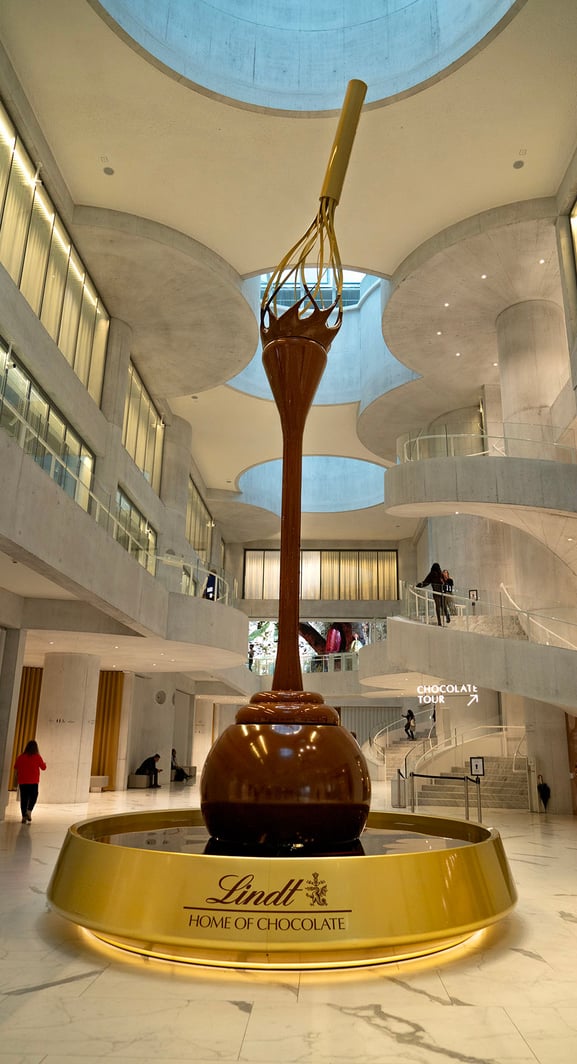

5Cs Of Europe
Explore Europe's castles, cathedrals, chocolates, cheese, & champagne.
Contact Us
Join to get the latest updates and travel tips from 5CsofEurope
info@5csofeurope.com
© 2025. All rights reserved.
Site built by DevangOnline
